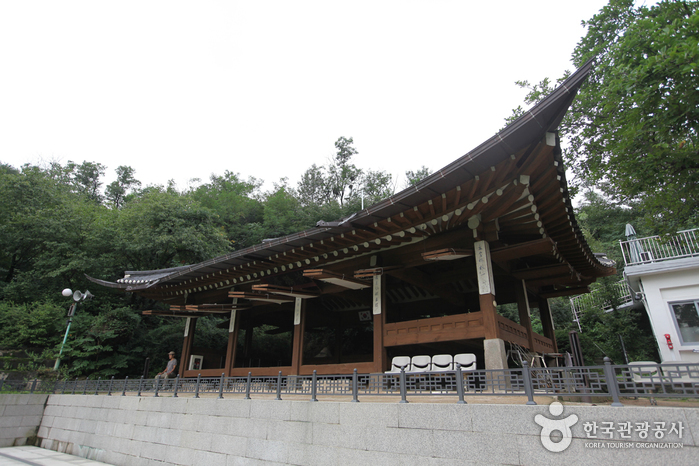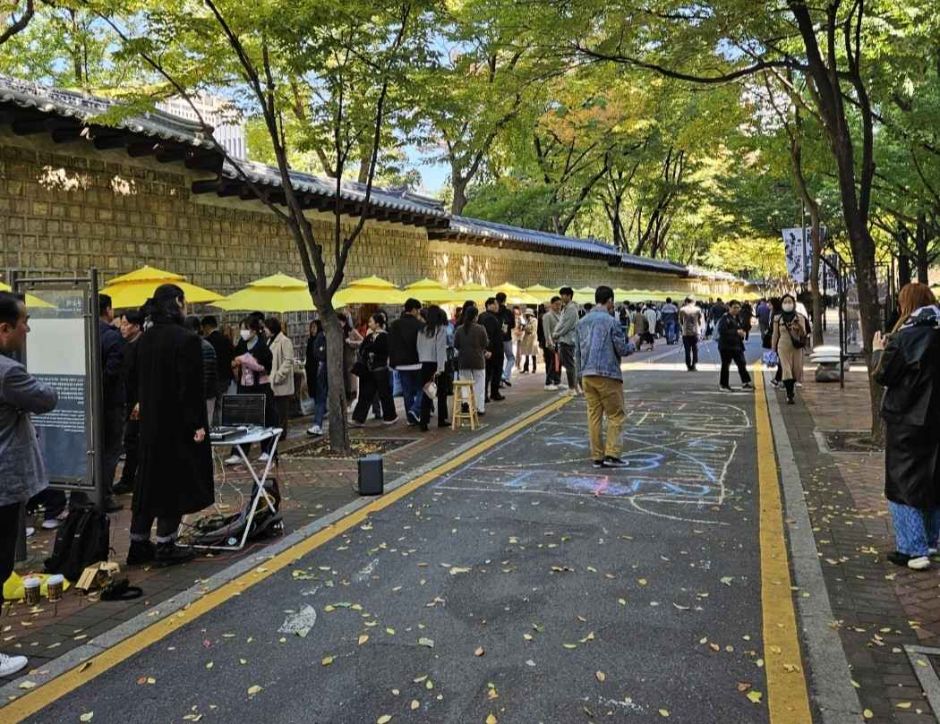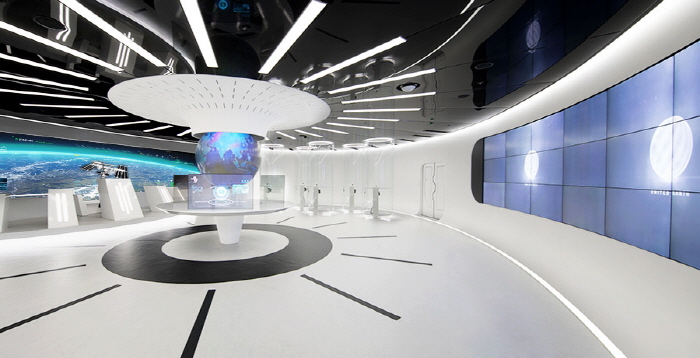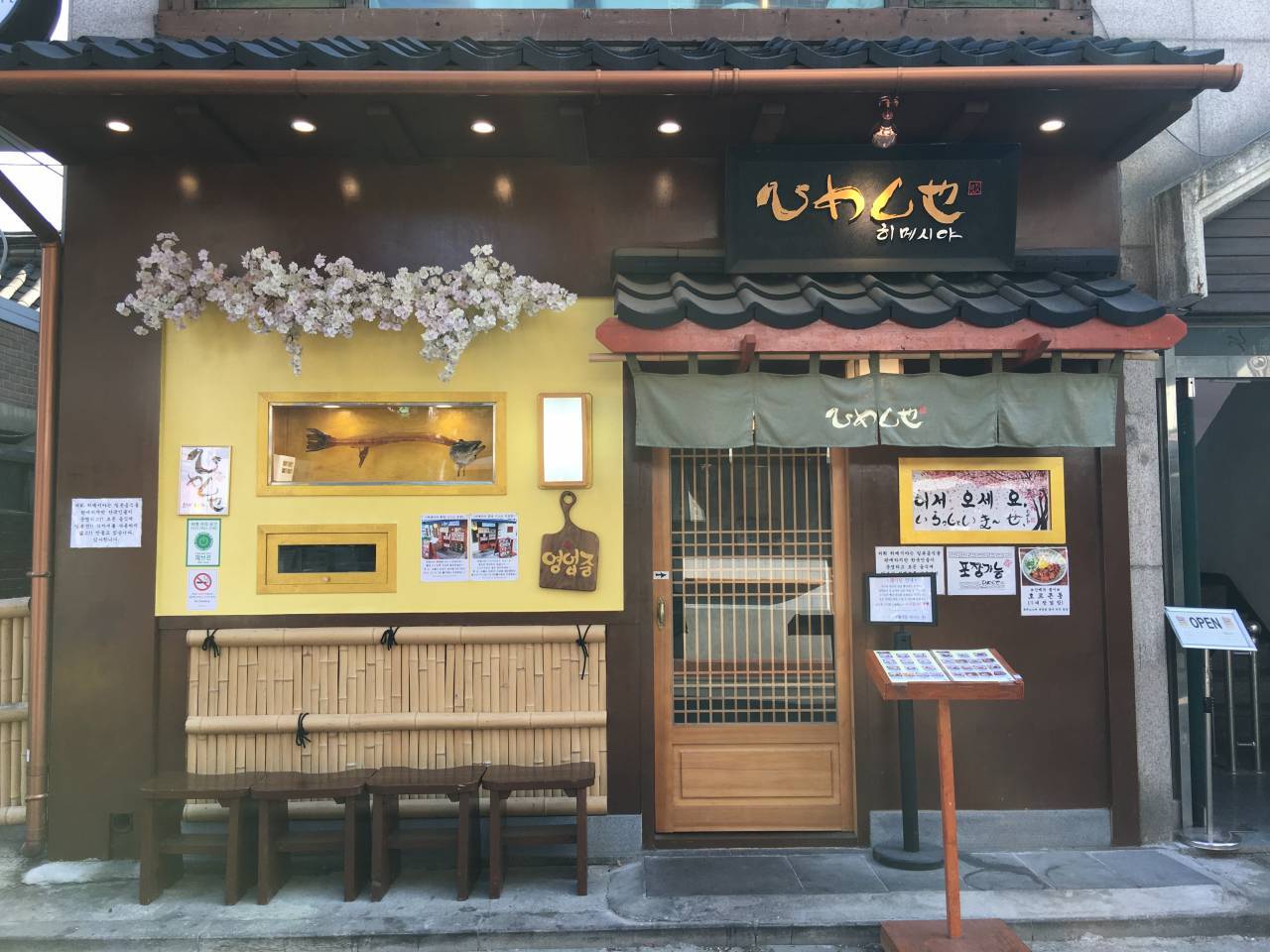Hwanghakjeong Pavilion (황학정)
1.6Km 2020-04-02
15-32, Sajik-ro 9-gil, Jongno-gu, Seoul
+82-2-738-5785
Hwanghakjeong Pavilion was built in 1898 by decree of King Gojong’s. It was originally set up close to the northern wall of Hoesangjeon in Gyeonghuigung Palace for archery practice. In 1922 when the Japanese colonial government sold buildings of Gyeonghuigung Palace to the public to build Gyeongseong Middle School in the location, the Hwanghakjeong Pavilion was bought and restored at the current location, which is an old site of Deunggwajeong Pavilion located to the North of Sajik Park.
It is relatively large for a pavilion, but the structure is plain and simple. There is a well behind the pavilion to the southwest. A rock behind the well has an engraved poem about eight beautiful scenes of Hwanghakjeong. Located to the right of the pavilion building (northeast of the building) is Hancheongak Pavilion, which has unique roof. To the west of the pavilion is Sauhoegwan Hall that was built with reinforced concrete.
Lacantina (라칸티나)
1.6Km 2021-03-29
19, Eulji-ro, Jung-gu, Seoul
+82-2-777-2579
The first Italian restaurant in Korea. This Western dishes restaurant is located in Jung-gu, Seoul. The representative menu is pasta.
Podowon Samgyetang (포도원삼계탕)
1.6Km 2021-03-18
41-5, Changgyeonggung-ro26-gil, Jongno-gu, Seoul
+82-2-743-6541
This is a Korean cuisine located in Daehak-ro, Seoul. The best menu at this restaurant is ginseng chicken soup. It sells Korean healthy cuisines.
Jeongdong Culture Festival (정동문화축제)
1.6Km 2024-10-11
Jeong-dong, Jung-gu, Seoul
+82-2-3701-1603
Jeongdong Culture Festival brings an autumn ambience to Jeongdong-gil in Jung-gu, Seoul. The festival aims to promote the attractions within the area through various events and exhibitions.
Dalgaebi (달개비)
1.6Km 2024-03-15
16 Sejong-daero 19-gil, Jung-gu, Seoul
+82-82-2-765-2035, 2068
Dalgaebi is a restaurant specializing in Korean table d'hote, using fresh seasonal ingredients. Its flagship menu is the teukseon sangcharim jeongsik (special set menu), which includes porridge, seasonal dishes, main courses, and desserts. The galbi sangcharim (galbi course), featuring premium Korean beef galbi grilled over charcoal and served with soybean paste jjigae, is also popular. Known for its private dining spaces and upscale ambiance, reservations can be made via phone.
SK Telecom T.um (SK텔레콤 미래기술체험관 T.um(티움))
1.6Km 2024-03-06
65, Eulji-ro, Jung-gu, Seoul
+82-2-6353-6665
SK Telecom T.um is an ICT museum. T.um stands for 'Technology, U-topia, Museum'. It boasts a wide array of experience technologies such as 5G autonomous vehicles, drones, flying cars, artificial intelligence, big data, virtual reality, augmented reality, robots, Internet of Things, and 3D printing. Visitors can also see the future city based on 5G. Reservations are required online.
Himesiya (히메시야)
1.6Km 2021-03-18
40, Changgyeonggung-ro, 26-gil, Jongno-gu, Seoul
+82-70-4187-4569
This is a Japanese cuisine located in Changgyeonggung Palace, Seoul. This restaurant specializes in Japanese rice bowls with toppings. The best menu at this restaurant is katsudon.
Gyerim Sikdang (계림식당)
1.6Km 2021-03-19
39, Donhwamun-ro, 4-gil, Jongro-gu, Seoul
+82-2-2266-6962
This is a Korean cuisine located in Jongno, Seoul. The best menu at this restaurant is spicy braised chicken. Try Korean spicy chicken dishes.
Gyeonghuigung Palace (경희궁)
1.6Km 2024-07-09
45 Saemunan-ro, Jongno-gu, Seoul
+82-2-724-0274
Gyeonghuigung Palace, a designated Historic Site, was originally called the large palace by Saemun Gate, or the Western Palace, for its location within the city. It was not until the eighth year of Gwanghaegun (1616) that the palace was used as a royal residence for the king, changing the name to Gyeongdeokgung Palace. The name later changed again to the current Gyeonghuigung Palace in 1760. The palace grounds included many halls but they were mostly all burned down in a fire in 1829. After the Japanese occupation began, all remaining buildings on the site were torn down and the palace grounds were turned into Gyeongseong Middle School (now Seoul High School). The school moved to Gangnam area in 1987, afterwhich the previous location was turned into a park. The palace grounds currently hold Seoul Museum of Art and walking paths, as well as a restoration of Heunghwamun Gate, the main gate of the palace, and Sungjeongjeon Hall, the main hall, completed in November 1994.







 English
English
 한국어
한국어 日本語
日本語 中文(简体)
中文(简体) Deutsch
Deutsch Français
Français Español
Español Русский
Русский